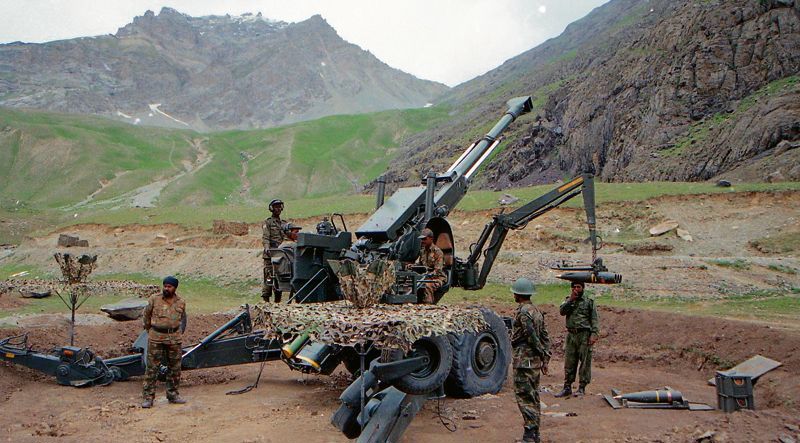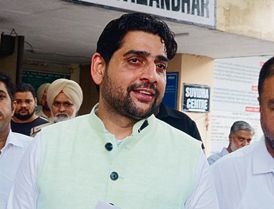
Resilience: The Kargil War highlighted the strengths of the Indian armed forces in undertaking operations in difficult terrain. Tribune file photo
Maj Gen Ashok Kumar (Retd)
Director General, Centre for Joint Warfare Studies
THE Kargil conflict revealed important aspects of warfare between two nuclear-armed nations. Even at the height of the Cold War, the US and the USSR did not have a direct confrontation; they preferred to take a swipe at each other through their proxies. The Kargil War, therefore, became a test case for a limited conflict under the nuclear umbrella or overhang. Paradoxically, on one hand, it showed that there were windows of opportunity for the use of calibrated violence — that nuclear-armed countries could still wage wars against each other in the conventional sense. On the other hand, the application of this violence was constrained in space and time. The conflict also demonstrated significant coordination among the three Services on a number of issues, with a fair number of discordant notes.
The 1999 war was a result of then Pakistan army chief Gen Pervez Musharraf’s wish to change the status quo along the Line of Control (LoC) between India and Pakistan. The plan was to occupy winter-vacated heights along a large swathe of territory in the Kargil-Dras-Batalik sectors in Ladakh and force the closure of NH 1A, the lifeline of Indian troops deployed in the strategic Siachen sector. Musharraf wanted to kill two birds with one stone. With this tactical surprise, he wanted to weaken Indian deployment in Siachen — he was still hurting from India’s pre-emptive occupation of the Saltoro Ridge in 1984 — and use the occupation of the heights in Kargil to claim that area as part of Pakistani territory. The plan, which was audacious in its conception and execution, achieved complete tactical and strategic surprise during the initial phases. However, one of the underlying assumptions of Pakistan’s gamble was the unwillingness of the Indian forces to undertake major land operations for wresting back the control of the heights. The use of air power was not even envisaged. These assumptions were proven wrong.
India mobilised five divisions, as many independent infantry brigades and close to 44 battalions from Kashmir to Kargil and launched Operation Vijay, a joint counteroffensive to evict the intruders from the occupied heights and restore the status quo at the LoC.
Though Operation Vijay was successful in achieving its aim, and by July 26, 1999, the majority of combat operations were over, the nature of Army-IAF interface at the stages of initial planning and staff work had a greater scope of coordination. Once the intrusions were detected on May 3, the IAF deployed its reconnaissance aircraft as early as May 10, but the information flow between the Army’s 15 Corps and Air Officer Commanding (AOC), J&K, needed much more integrated coordination. The Army insisted at the start of the operations that it could manage Kargil on its own and would only need the support of armed helicopters. However, closer to the date of the launch of Operation Vijay on May 26, it was realised that the quantum of Pakistani troops and the nature of their entrenchment necessitated the use of IAF’s fixed-wing aircraft.
There was limited joint planning, briefing or staffing at the initial stages; it was worsened by a lack of knowledge regarding the strengths and challenges of each other’s platforms and requirements. While the Army could not appreciate the vulnerabilities of slow-moving helicopters in mountainous terrain against surface-to-air missiles, the IAF insisted repeatedly on obtaining political clearance for the use of airpower by leaning on the trope of airpower likely to expand the theatre and scope of the conflict. Another issue, once these challenges were sorted out and political clearance was obtained for the use of airpower with a caveat of not crossing the LoC, was the shortage of precision munitions in the IAF’s inventory and a lack of acclimatisation of IAF pilots to night-time targeting. Due to this, there were multiple instances where preparatory air strikes preceded Army operations but were unable to impact the progress of the land operations in the expected manner. By this time, however, a working coordination had been achieved between the AOC, J&K, and Headquarters, 15 Corps.
Operation Vijay and the IAF’s contribution to it, Operation Safed Sagar, functioned like clockwork once the rhythm was stabilised and the tempo of operations increased. The IAF adjusted to the lack of precision munitions very quickly to mount the Litening electro-optical targeting pods and Paveway II laser-guided bombs on their Mirage 2000s. The total destruction of the Muntho Dhalo supply camp and the command and control centre of the Northern Light Infantry (also serving as the fire direction centre for Pakistani artillery batteries in the area) on the top of Tiger Hill in single passes weakened the enemy’s morale and jeopardised and eliminated its supply chain, leading to the comparatively quick capture of the post.
The war highlighted the strengths of the Indian armed forces in undertaking operations in difficult terrain and the innovative nature of their coordination, where order and stability emerged but took some time. This is not the case anymore in contemporary conflict. Today, the launch of operations and their conduct will be undertaken through the use of assets and technologies, which will strain our understanding of the separation of domains and involve a form of mosaic warfare, where platforms and technologies will need to control cross-domain assets. The lessons from Kargil in the domain of jointness and integration underscore the need for a ground-up and foundational level of joint structures in physical, organisational and conceptual forms. Joint understanding of a common threat, followed by joint planning and execution, will lead to the application of the strengths of the respective Services. Tailored theatre commands, which look at particular areas and adversaries with the strengths of the three Services as well as additional domains, are the way ahead, and this is what we must take away from the 25-year-old war.
The author is a veteran of the Kargil War
Join Whatsapp Channel of The Tribune for latest updates.




























